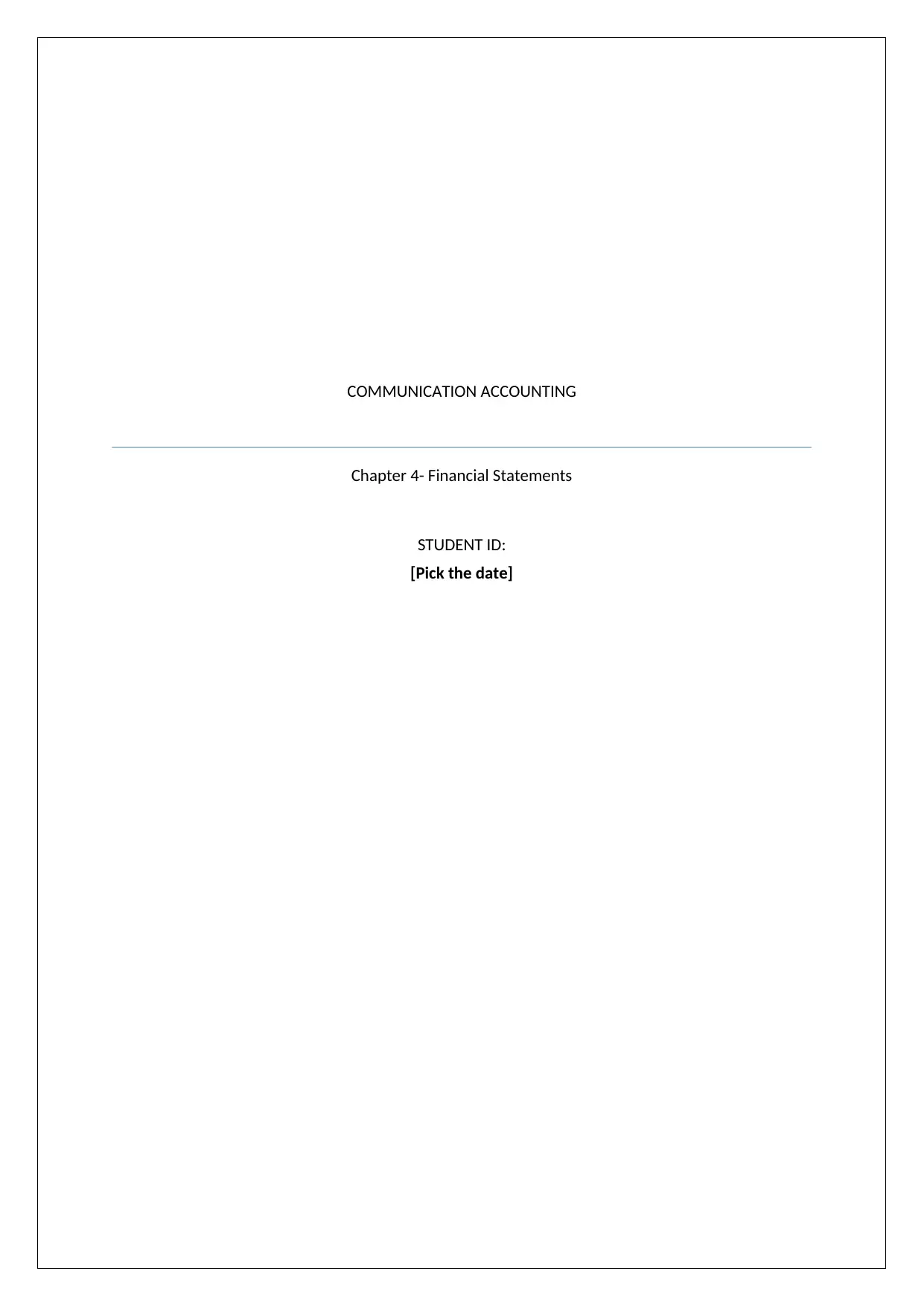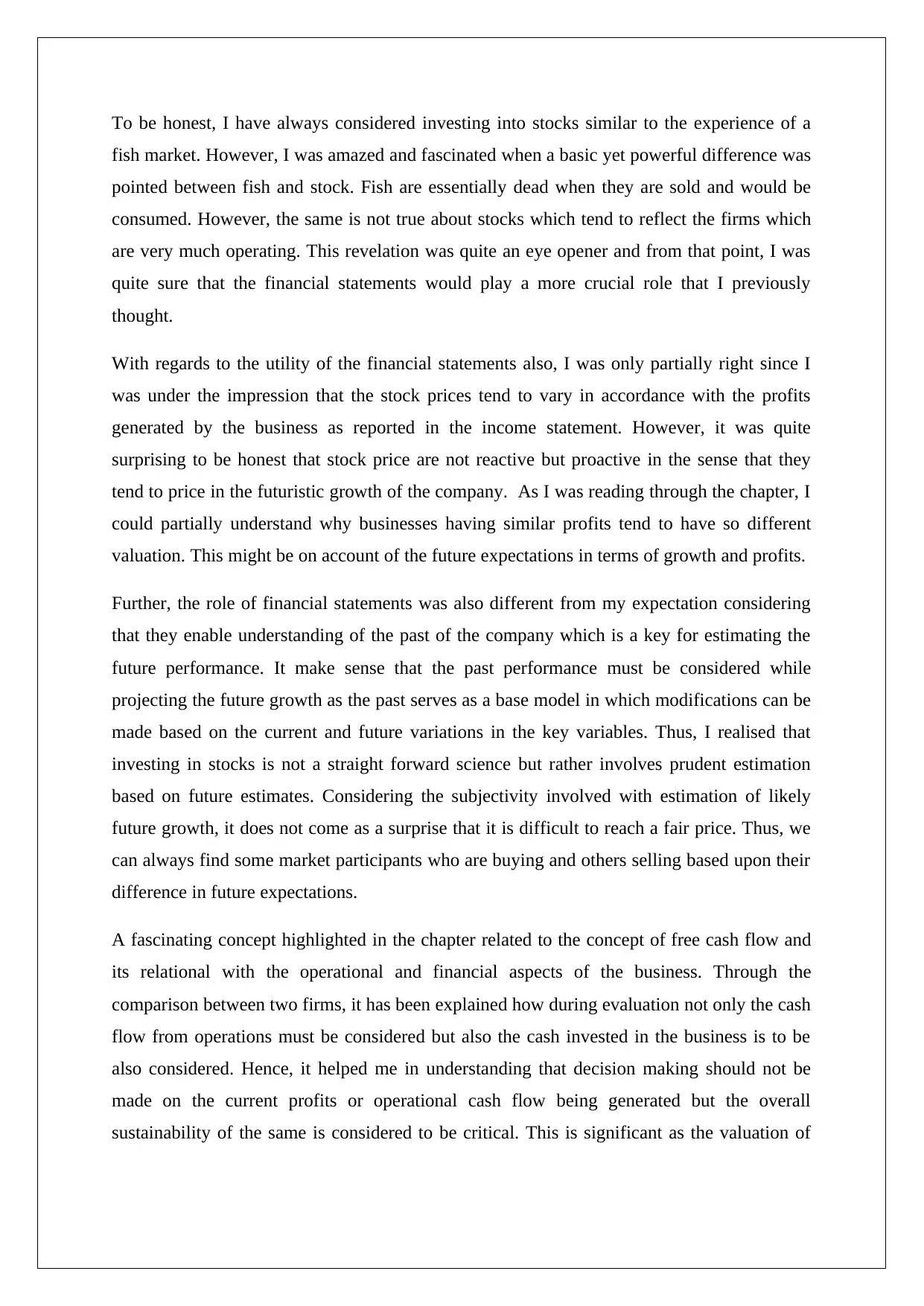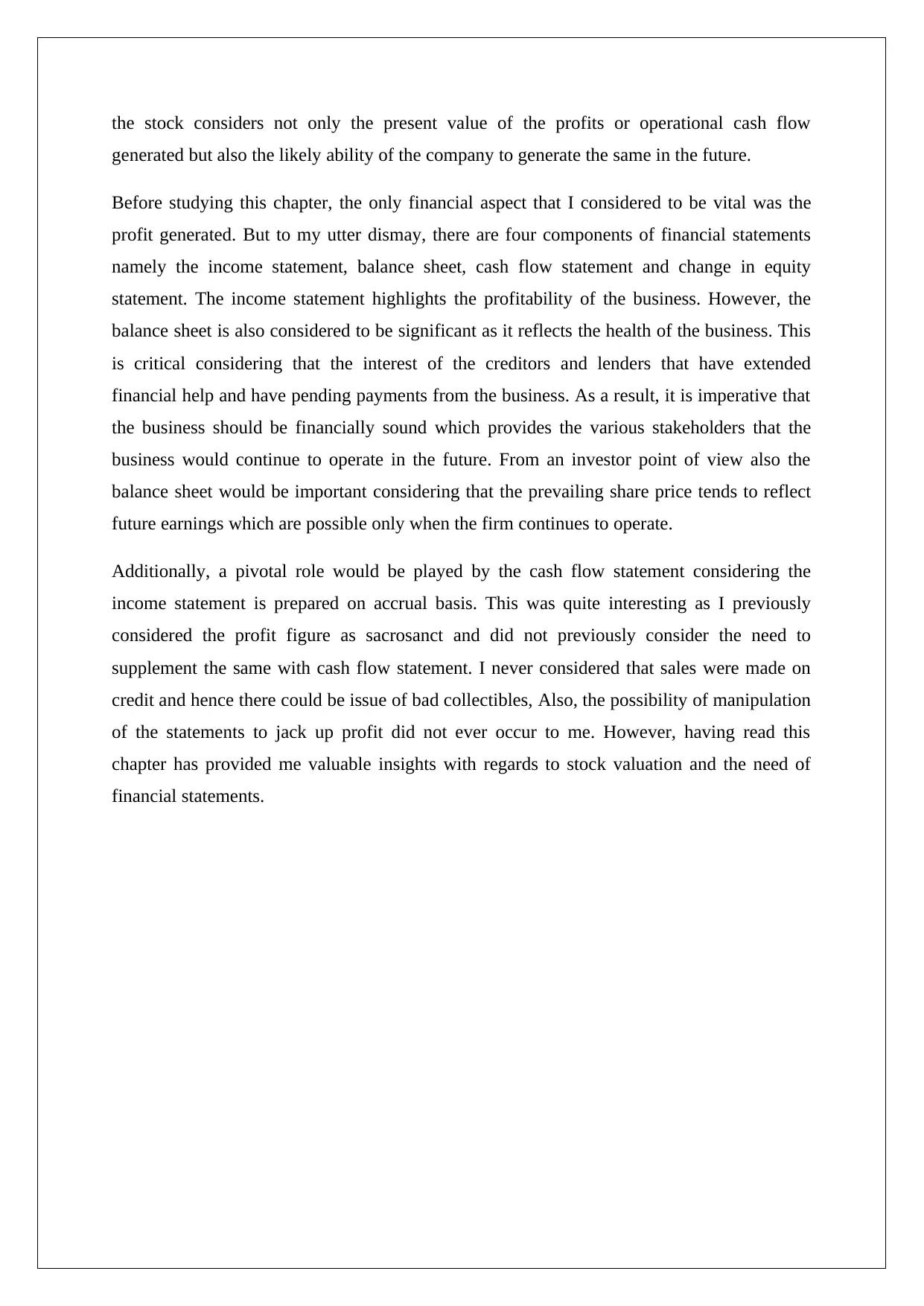ACCT11059 Accounting: Reflective Analysis of Financial Statements
VerifiedAdded on 2023/06/13
|3
|813
|84
Journal and Reflective Writing
AI Summary
This journal entry reflects on the student's evolving understanding of financial statements, particularly after reading Chapter 4. Initially viewing stock investment with skepticism, the student gains a deeper appreciation for financial statements, recognizing their role in predicting future company growth rather than just reporting past profits. The reflection covers the importance of free cash flow, the balance sheet, and the cash flow statement, moving beyond a sole focus on the income statement. The student acknowledges the proactive nature of stock prices, influenced by future expectations, and the subjectivity involved in estimating future growth. The writing underscores the interconnectedness of financial statements in evaluating a company's health and sustainability, crucial for informed investment decisions. Desklib offers similar resources for students seeking help.
1 out of 3









![Financial Statement Analysis Homework - [University Name] - Semester 1](/_next/image/?url=https%3A%2F%2Fdesklib.com%2Fmedia%2Fimages%2Fpl%2F94032add73c5467f81c103edfc1a6f31.jpg&w=256&q=75)
![[object Object]](/_next/static/media/star-bottom.7253800d.svg)